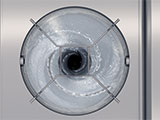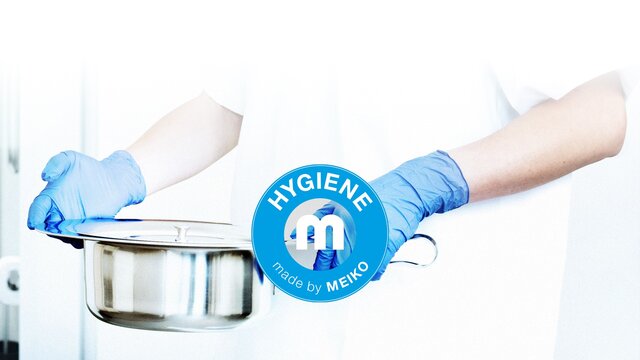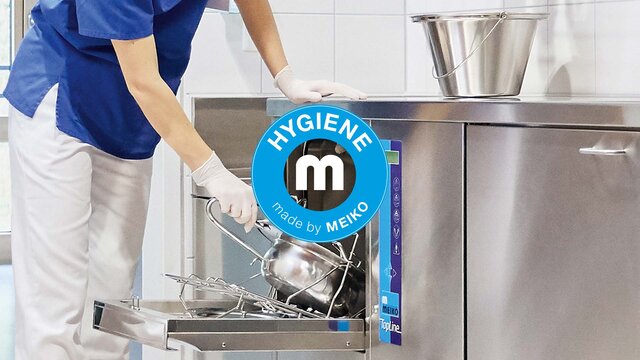The most effective way to clean and disinfect bedpans
Why using a machine to clean bedpans is better than manual cleaning

The greater the number of tasks you carry out by hand, the higher the risk of contamination with germs. From moving a bedpan, emptying it, and storing it, everything argues in favour of machine cleaning for bedpans wherever they are used. Read on to find out why.

Bedpan washer-disinfectors are a permanent fixture in the hospital sluice rooms and care home utility rooms all over the world. The Commission for Hospital Hygiene and Infection Prevention (KRINKO) at the Robert Koch Institute (RKI) in Germany is very clear on whether they are to be considered a ‘luxury’ or a necessity (translated from the original German):
‘Bedpan washer-disinfectors should be used to clean care utensils instead of manual cleaning because of process reliability (a validated process that is checked at regular intervals), to ease the burden on staff and for personal protection.’
Having carried out a comparative analysis of various methods for cleaning bedpans, the Agence d’évaluation des technologies et des modes d’intervention en santé (AETMIS) in Quebec, Canada, reached the following conclusion:
‘Manual bedpan cleaning must be prohibited because it poses a very high risk of infection. Staff must not empty bedpans into sinks or toilets and must no longer use spray wands.’
The Spaulding classification:
The classification of medical devices as critical, semi-critical and non-critical published in the 1960s by Earle H. Spaulding categorises a bedpan as a non-critical medical device. However, because there is a possibility of a bedpan coming into contact with non-intact skin or mucous membranes, it can also be categorised as semi-critical. With this in mind, the Spaulding list recommends that after cleaning, bedpans should also be disinfected and better still sterilised.
Risks of contamination – a direct comparison
The risk of contamination is present wherever a bedpan is handled, whether that is during its transport, emptying or storage. The greater the number of tasks that are carried out by hand, the higher the risk.
Risks: spray and droplets (aerosols) contaminating staff hands and the environment (slop sink unit, walls, floor)

The new slop sink unit saves over 50% on water, improves safety and is incredibly convenient to service, making it a must-have for every conscientious ward.
Christine Lobè, who authored the above comparative analysis of bedpan equipment processing in 2009, concluded the following in her literature review:
‘There is obviously a risk of splashback when bedpans are emptied manually before being placed in a bedpan washer-disinfector. The contaminated droplets pose an infection hazard to staff and the work environment.’
Not so with a bedpan washer-disinfector from MEIKO! The machine empties the contents of the bedpan automatically, hygienically, and safely into the appliance only after you close the door. This is important because bodily fluids carry high levels of infectious substances, so it requires an extreme level of care and attention and the highest safety standards in disposing of them.
‘Although more recent bedpan-washer models no longer require bedpans to be emptied by hand, the staff still risk contamination if excretions are spilled during bedpan transport in the corridors (from patients’ rooms to dirty utility rooms). The same risk applies when macerators are used.’
MEIKO can even reduce this hazard by offering bedpan washer-disinfectors designed specifically for isolation rooms and ICUs. Installing the machine over the toilet inside patients’ rooms prevents the spread of germs.

Benefits of machine cleaning – at a glance
Machine cleaning and disinfection has the benefit of completing the disinfection inside a closed system—at the touch of a button, using a thermal process, with an adjustable A0 value (60 to 3000) and short process cycles.
This minimises the risks of contamination to the fullest extend possible because the bedpan is emptied, cleaned, disinfected and dried fully automatically.
The following are the benefits of using MEIKO bedpan washer-disinfectors to achieve the highest standards of hygiene:
- Prevent hand contamination with automatic door opening via infrared control or foot switch
- Reduce the transmission of pathogens with shorter transport distance when the machine in wall-mounted in patients’ rooms or ensuite bathrooms
- Minimise user errors with large text and buttons, and clear icons and symbols on the display
The result:
- More reliable cleaning for patients
- Increased safety and security for staff
What should the hygiene management of care utensils look like in conjunction with clostridium difficile (now clostridioides difficile)?
What are the benefits of cleaning bedpans in MEIKO bedpan washer-disinfectors?
Read all about these factors and more in the white paper.
>> Download it here now!



